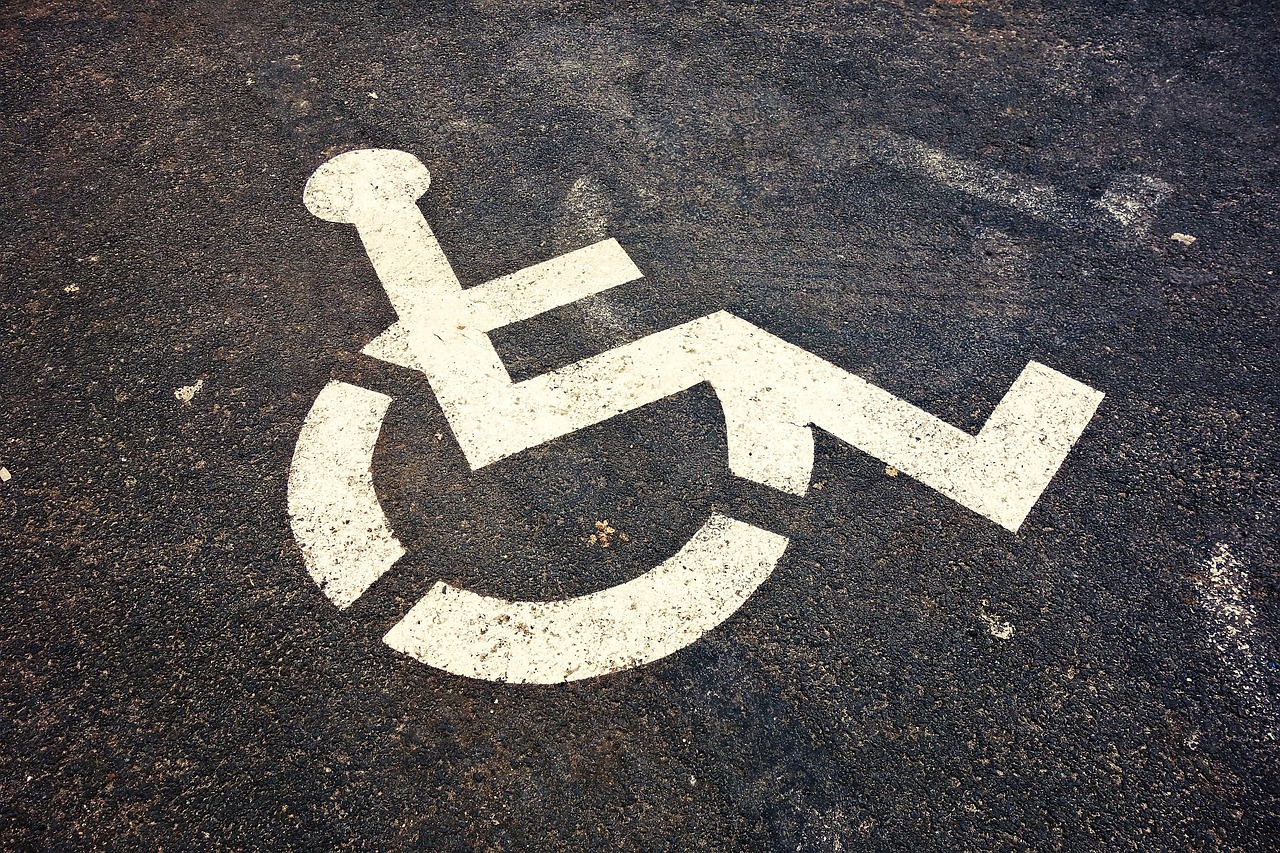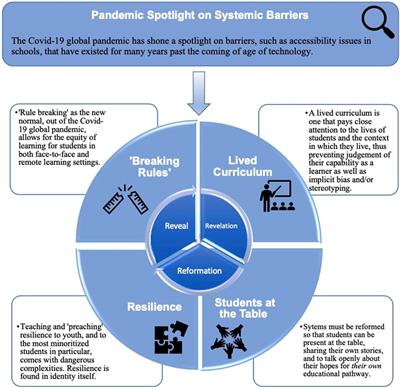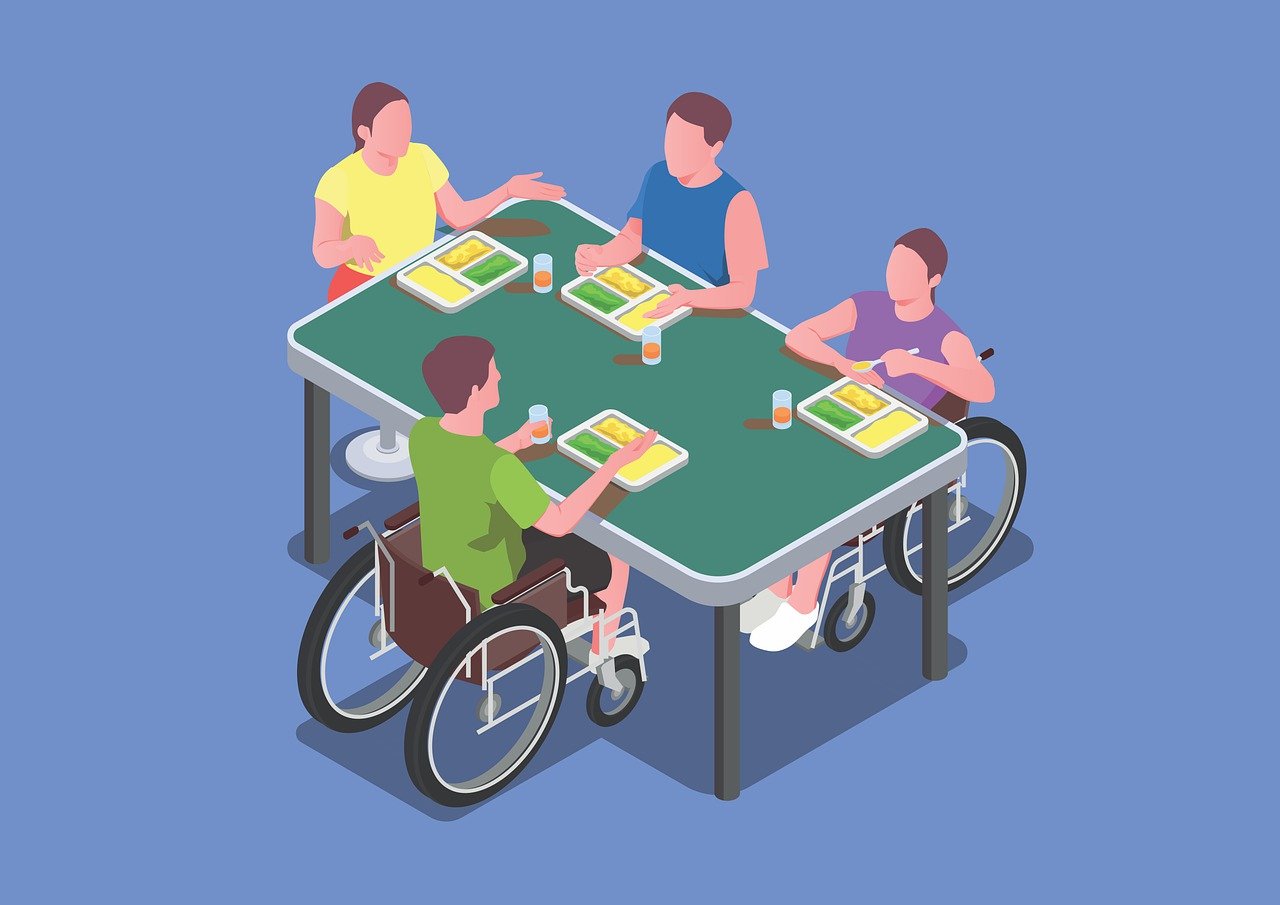Introduction
Sports have the incredible power to unite people from diverse backgrounds, inspire individuals to reach their full potential, and bridge societal divides. Yet, for many years, various barriers have hindered inclusivity in sports. In this article, we’ll explore the importance of inclusivity, the barriers that have historically existed, and the ways in which sports are breaking these barriers to promote diversity and equity.
Sports, as a global phenomenon, possess a unique and formidable ability to transcend cultural, social, and geographical boundaries. They bring people together, irrespective of their backgrounds, inspiring them to aspire to greatness and achieve their fullest potential. In doing so, sports have the capacity to mend societal divides, but it’s essential to acknowledge that they have also borne witness to historical barriers that hindered inclusivity and equal participation.
The importance of inclusivity in sports cannot be overstated. It’s about ensuring that anyone who has a passion for sports, regardless of their race, gender, socioeconomic status, or physical abilities, has the opportunity to participate, compete, and excel. Inclusivity fosters a sense of belonging and empowerment, allowing individuals to thrive both on and off the field.
Throughout history, various barriers have cast shadows over the world of sports, limiting access and participation for marginalized groups. These barriers have included discriminatory practices, unequal opportunities, and prejudiced attitudes that perpetuated stereotypes and biases. These impediments not only denied talented individuals the chance to shine but also perpetuated inequalities in society at large.
Thankfully, the world of sports has been undergoing a transformative journey towards inclusivity and equity. Initiatives and movements have emerged, championing the cause of equal representation, diversity, and inclusivity. Athletes from marginalized groups have shattered glass ceilings, inspiring countless others to follow in their footsteps. Women’s sports, for example, have gained tremendous recognition and support, paving the way for aspiring female athletes to compete at the highest levels.
Sports organizations and governing bodies have also implemented policies and programs designed to break down historical barriers. These initiatives include grassroots development programs, anti-discrimination policies, and campaigns to combat prejudice and stereotypes. Moreover, sports have been instrumental in promoting social change and addressing critical issues such as gender equality, racial justice, and LGBTQ+ rights.
In essence, sports are evolving into a powerful catalyst for social progress and inclusivity. They serve as platforms for change, where diversity is celebrated, and talent knows no bounds. By shining a spotlight on these transformational journeys, we recognize the potential of sports not only to inspire greatness on the field but also to inspire a more inclusive and equitable society. In exploring the importance of inclusivity and the barriers that have been historically faced, we embrace the profound impact that sports can have in shaping a brighter and more inclusive future for all.
If you’d like to dive deeper into this subject, there’s more to discover on this page: Breaking barriers: Unconscious gender bias in the workplace
Sports hold a unique place in society, transcending borders, languages, and cultures. They have the ability to bring people together, foster camaraderie, and promote a sense of belonging. As such, inclusivity in sports is not only about fair competition but also about creating a more harmonious and equitable world.
Sports are a universal language that defies the boundaries of geography, language, and cultural differences. They possess a remarkable power to unite individuals from diverse backgrounds, fostering a profound sense of camaraderie and belonging. In this light, the importance of inclusivity in sports transcends mere fairness in competition; it extends to shaping a more harmonious and equitable world. Here’s a deeper exploration of how sports achieve this remarkable feat:
Bridge Across Differences: Sports serve as a bridge that connects people who may otherwise have little in common. Whether you’re cheering for your favorite team at a stadium or playing on a community field, sports provide a shared experience that transcends political, racial, and social divisions.
Cultural Exchange: International sporting events like the Olympics exemplify the power of sports in promoting cultural exchange. Athletes and spectators from around the world converge, exchanging not only athletic prowess but also cultural traditions, cuisine, and values.
Community Building: At the local level, sports are instrumental in community building. They bring neighbors together, creating bonds that extend beyond the playing field. Youth leagues, neighborhood tournaments, and amateur clubs promote a sense of belonging and shared identity.
Inclusivity: Inclusivity in sports ensures that everyone has the opportunity to participate, regardless of their background, gender, or abilities. This commitment to inclusivity sends a powerful message of equality and respect, setting a precedent for inclusivity in other aspects of society.
Role Models: Athletes serve as role models for millions, inspiring individuals to pursue their dreams and overcome obstacles. When sports embrace inclusivity, they showcase diverse role models, encouraging everyone to believe in their potential and worth.
Education: Sports have the potential to educate society about important issues like tolerance, diversity, and acceptance. When sports organizations take a stand against discrimination and promote inclusivity, they amplify these essential messages on a global stage.
Conflict Resolution: Sports provide a non-violent outlet for competition and conflict resolution. Rivalries that may exist on the field often turn into mutual respect and understanding off the field, contributing to peaceful relations between nations and communities.
Empowerment: Inclusivity in sports empowers marginalized groups, offering them a platform to showcase their talents and challenge stereotypes. This empowerment extends to other areas of life, as individuals gain confidence and a sense of agency.
Global Solidarity: During major sporting events, the world comes together to celebrate athletic achievement. This global solidarity highlights our shared humanity and the potential for cooperation on a global scale.
Advocacy and Change: Athletes and sports organizations often use their influence to advocate for social change and justice. Their efforts raise awareness and drive positive change in areas such as gender equality, LGBTQ+ rights, and racial equity.
In summary, sports are not just games; they are a force for unity, understanding, and positive change in the world. Inclusivity in sports goes beyond leveling the playing field; it fosters a sense of belonging, promotes diversity, and sets a powerful example for society at large. By embracing inclusivity, sports become catalysts for creating a more harmonious, equitable, and interconnected world, where individuals from all walks of life can come together in the spirit of camaraderie and mutual respect.
To delve further into this matter, we encourage you to check out the additional resources provided here: Disability and Sports | United Nations Enable

Throughout history, sports have often been marred by exclusion and discrimination. Barriers based on race, gender, disability, socioeconomic status, and sexual orientation have limited opportunities for many individuals. These barriers have perpetuated inequality and missed out on the rich diversity of talent that exists across communities.
Across the annals of history, the world of sports has frequently been tainted by the dark shadows of exclusion and discrimination. Time and again, artificial barriers constructed along the fault lines of race, gender, disability, socioeconomic status, and sexual orientation have cast a pall over the universal spirit of competition. These barriers have not only stifled the dreams of countless individuals but have also robbed the world of sports of the vibrant tapestry of talent that exists across diverse communities.
1. Breaking Racial Barriers: The history of sports is replete with stories of racial segregation and prejudice. However, each instance of breaking racial barriers, from Jackie Robinson’s entry into Major League Baseball to the global recognition of athletes like Jesse Owens and Usain Bolt, has served as a beacon of hope, demonstrating the power of inclusivity.
2. Gender Equality: For too long, sports have been marked by gender disparities, with women facing limited opportunities and unequal recognition. Yet, pioneers like Billie Jean King, who championed equality in tennis, and the rise of women’s sports leagues have shattered these barriers, inspiring future generations of female athletes.
3. Inclusivity for Disabled Athletes: The Paralympic movement stands as a testament to the triumph of the human spirit. Athletes with disabilities have overcome daunting challenges to compete on the world stage, challenging stereotypes and expanding the definition of athleticism.
4. Socioeconomic Accessibility: Economic disparities have often stood as a formidable barrier to sports participation. The efforts of organizations and initiatives aimed at making sports accessible to underserved communities, such as inner-city youth programs and scholarships for aspiring athletes, are gradually leveling the playing field.
5. LGBTQ+ Representation: Athletes who identify as LGBTQ+ have faced discrimination and bias. However, the courage of individuals like Billie Jean King, Martina Navratilova, and the more recent visibility of LGBTQ+ athletes has led to greater acceptance and inclusivity in sports.
6. Embracing Diversity: Celebrating diversity in sports is not just a moral imperative; it’s a recognition of the wealth of talent that lies within our global communities. Athletes from different backgrounds, ethnicities, and cultures bring unique perspectives and styles to their sports, enriching the global sporting landscape.
7. The Power of Inclusion: Inclusive sports not only provide opportunities for individuals but also foster societal change. They challenge stereotypes, promote empathy, and inspire future generations to believe in the limitless potential of human achievement.
In conclusion, the history of sports reflects a journey of progress, albeit one marked by hurdles and setbacks. Each instance of breaking down barriers has not only expanded the horizons of sports but has also served as a beacon of hope for a more inclusive and equitable world. While challenges persist, the collective effort to eliminate discrimination and foster diversity in sports is a testament to the enduring human spirit, proving that the power of unity and inclusivity is mightier than any wall of exclusion. As we look to the future, the world of sports has the potential to continue breaking barriers, celebrating diversity, and embracing the boundless talent that resides within every corner of our global community.
Additionally, you can find further information on this topic by visiting this page: Breaking Barriers: A Brief Overview of Diversity in Orthopedic …

One significant area of progress in recent decades has been the breaking of gender barriers. Women have gained greater access to competitive sports, and female athletes continue to excel at the highest levels. Initiatives like Title IX in the United States have been instrumental in promoting gender equity in sports.
nullIf you’d like to dive deeper into this subject, there’s more to discover on this page: Breaking barriers: Unconscious gender bias in the workplace

Promoting inclusivity also extends to leadership roles within sports organizations. Having diverse leadership helps ensure that decisions are made with a broader perspective and that opportunities are equitable for all. Increased representation of women, minorities, and individuals from various backgrounds in sports administration is a positive step toward inclusivity.
Promoting inclusivity within the realm of sports organizations is not solely about participation; it’s also about leadership that reflects the diversity of the community it serves. Here’s why diverse leadership is a cornerstone of fostering inclusivity in sports:
Broader Perspective: Diverse leadership brings together individuals with unique experiences, perspectives, and insights. This diversity of thought fosters a more holistic understanding of the challenges and opportunities within the sports community. It allows for well-rounded decision-making that takes into account the needs and aspirations of a wider range of participants.
Equitable Opportunities: Inclusive leadership means that opportunities within sports organizations are not confined to a select few. It ensures that individuals from various backgrounds, including women, minorities, and individuals with diverse life experiences, have equitable access to leadership roles. This sends a powerful message that everyone is welcome and valued in the sports community.
Role Modeling: Diverse leadership provides role models for aspiring athletes and administrators from underrepresented groups. When individuals see leaders who look like them, they are more likely to believe that they too can achieve similar positions. This inspiration can motivate greater participation and engagement in sports at all levels.
Cultural Competency: Leaders from diverse backgrounds often possess cultural competency, an essential skill for understanding and respecting the diverse needs and traditions of athletes and participants. This competency leads to more inclusive policies and practices within sports organizations.
Innovative Solutions: Diverse teams are known for their ability to generate innovative solutions. In sports, this can lead to the development of creative programs, initiatives, and strategies that resonate with a wider audience and address complex challenges effectively.
Enhanced Communication: Effective communication is vital in sports administration. Diverse leadership teams excel in their ability to communicate across different cultural and linguistic backgrounds, fostering greater harmony and collaboration within the sports community.
Breaking Stereotypes: By breaking stereotypes and biases related to leadership roles, diverse leadership challenges preconceived notions about who can excel in sports administration. It demonstrates that leadership is not determined by gender, ethnicity, or background but by dedication, capability, and passion.
Global Reach: In today’s interconnected world, sports organizations often engage in international partnerships and competitions. Diverse leadership with a global perspective can navigate the complexities of international relations, opening doors to broader opportunities and collaborations.
Enhanced Accountability: Diverse leadership promotes accountability and transparency within sports organizations. It encourages the development of policies and practices that actively address issues related to discrimination, harassment, and inequity.
Sustainable Growth: Inclusivity is not a trend but a foundation for sustainable growth in sports. By embracing diverse leadership, sports organizations position themselves for long-term success by appealing to a broader and more engaged community of participants, fans, and supporters.
In conclusion, promoting inclusivity through diverse leadership in sports organizations is a multifaceted approach that enhances decision-making, fosters equitable opportunities, and sends a powerful message of welcome and value to all participants. It is an essential step toward creating a sports community that thrives on the principles of diversity, equity, and inclusion, ultimately enriching the experience for everyone involved.
You can also read more about this here: Inclusion and Diversity in sport – what is it – Play by the Rules …

For individuals with disabilities, accessibility has been a significant challenge in sports. However, there has been a growing recognition of the importance of providing accessible facilities and programs. Adaptive sports have gained popularity, creating opportunities for athletes with disabilities to excel.
The journey towards inclusivity in sports has been marked by a growing awareness of the challenges faced by individuals with disabilities. While accessibility barriers have historically hindered their participation, there is now a profound shift towards recognizing the importance of providing equitable opportunities. This evolution in the sporting landscape has given rise to adaptive sports, offering athletes with disabilities the chance to not only participate but also excel on their terms.
1. Breaking Down Physical Barriers: Accessibility in sports encompasses not only the provision of ramps and accessible facilities but also the removal of physical barriers that once prevented participation. Adaptive equipment, such as specialized wheelchairs, handcycles, and prosthetic devices, has made it possible for athletes with disabilities to engage in a wide range of sports, from wheelchair basketball to adaptive skiing.
2. Inclusive Facilities and Programs: Sports organizations and institutions are increasingly investing in inclusive facilities and programs. This includes accessible locker rooms, sports arenas, and training facilities that cater to the needs of athletes with disabilities. Moreover, programs are being designed to accommodate diverse abilities, ensuring that everyone, regardless of their physical or sensory challenges, can participate.
3. Growing Popularity of Adaptive Sports: Adaptive sports have gained immense popularity and recognition on both the national and international stages. The Paralympic Games, for instance, have become a global platform for athletes with disabilities to showcase their exceptional talents and dedication. These events not only celebrate athletic achievements but also challenge preconceptions about what people with disabilities can accomplish.
4. Promoting Inclusivity in Communities: Adaptive sports have a ripple effect that extends far beyond elite competitions. They foster inclusivity in local communities, encouraging people of all ages and abilities to get involved. This not only promotes physical fitness but also creates a sense of belonging and camaraderie among participants.
5. Inspiring Role Models: Athletes with disabilities have emerged as powerful role models, inspiring others to pursue their sporting dreams. Their stories of perseverance, resilience, and achievement serve as a testament to the human spirit’s indomitable nature and the boundless potential within each individual.
6. Empowerment Through Sports: Participation in adaptive sports is not just about physical activity; it’s a source of empowerment. It instills confidence, resilience, and a sense of purpose among athletes with disabilities, helping them overcome societal stigmas and barriers.
7. Changing Perceptions: The rise of adaptive sports is challenging traditional perceptions of disability. These athletes are proving that disability does not equate to limitations but rather represents a different way of achieving greatness. This shift in perspective contributes to a more inclusive and compassionate society.
In conclusion, the recognition of accessibility challenges in sports has ignited a transformative movement towards inclusivity and equity. Adaptive sports have emerged as a driving force behind this movement, providing individuals with disabilities the means to thrive in the world of sports. Through accessible facilities, inclusive programs, and the growing popularity of adaptive sports, athletes with disabilities are not only participating but also excelling, redefining the boundaries of what is possible. As this momentum continues, it brings us closer to a world where everyone, regardless of their abilities, can fully engage in the joy and empowerment that sports bring.
If you’d like to dive deeper into this subject, there’s more to discover on this page: Embracing Inclusivity and Diversity in School Sports Days

Sports organizations, governing bodies, and athletes themselves have become vocal advocates against discrimination. High-profile athletes have used their platforms to raise awareness about issues like racial inequality and discrimination against LGBTQ+ individuals. This activism has brought about important discussions and positive changes within the sports world.
The world of sports has undergone a profound transformation in recent years, as athletes, organizations, and governing bodies have emerged as powerful voices against discrimination of all forms. This shift has not only challenged stereotypes but has also sparked important conversations and ushered in positive changes within the sports community. Let’s explore how this advocacy against discrimination has become a force for positive change:
Elevating Social Issues: High-profile athletes have leveraged their platforms to shine a spotlight on pressing social issues. Whether it’s speaking out against racial injustice, gender inequality, or discrimination faced by LGBTQ+ individuals, athletes have brought these concerns to the forefront of public consciousness. Their actions transcend the boundaries of sports, making it clear that these issues affect society at large.
Inspiring Change: Athlete activism has inspired positive change within sports organizations and governing bodies. Many have implemented inclusive policies and initiatives aimed at eradicating discrimination, promoting diversity, and fostering an environment of acceptance. This includes measures to address racial disparities in coaching and leadership roles, as well as efforts to create more inclusive locker rooms and facilities.
Unity and Solidarity: Athlete advocacy has fostered a sense of unity and solidarity within the sports world. Athletes from diverse backgrounds and disciplines have come together, transcending rivalries and boundaries, to stand against discrimination. This unity sends a powerful message that discrimination has no place in sports, and it paves the way for collective action and change.
Redefining Role Models: Athletes have evolved into role models not only for their sporting prowess but also for their advocacy against discrimination. They serve as living examples of individuals who use their influence to champion social justice causes. Young athletes now look up to these role models not only for their athletic achievements but also for their commitment to creating a more equitable world.
Educational Initiatives: Athlete activism has led to the development of educational programs and initiatives that promote diversity, inclusion, and tolerance. These programs target both athletes and fans, helping to educate and raise awareness about discrimination and its impact. As a result, sports communities are becoming more informed and proactive in tackling these issues.
Changing Perceptions: Athletes who speak out against discrimination challenge societal perceptions and stereotypes. They demonstrate that athleticism knows no boundaries of race, gender, sexual orientation, or background. By doing so, they break down barriers and encourage others to do the same, fostering a more inclusive sporting culture.
Amplifying Voices: Athlete activism amplifies the voices of marginalized communities. It provides a platform for individuals who may not otherwise have access to such a wide-reaching audience. This amplification draws attention to the stories and experiences of those affected by discrimination, promoting empathy and understanding.
In conclusion, the advocacy against discrimination within the world of sports represents a profound and positive shift in the athletic landscape. Athletes have harnessed their influence to challenge discriminatory practices, ignite important conversations, and inspire meaningful change. This ongoing commitment to social justice not only transforms the sports community but also contributes to broader societal progress toward equality and inclusivity. Athlete activism has not only redefined the role of sports figures but has also demonstrated the transformative power of sports as a catalyst for change.
For a comprehensive look at this subject, we invite you to read more on this dedicated page: Inclusion and Diversity in sport – what is it – Play by the Rules …

Inclusivity starts at the grassroots level. Youth sports programs and community initiatives are essential for introducing sports to diverse populations. These programs can help break down financial and social barriers, making sports accessible to all.
nullDon’t stop here; you can continue your exploration by following this link for more details: Creating More Access to Sport for The Next Generation of Athletes

Celebrating diversity in sports is not just about removing barriers but also about appreciating the unique contributions that individuals from different backgrounds bring to the world of sports. It’s about recognizing that diversity enriches the sports landscape, making it more vibrant and exciting.
Indeed, celebrating diversity in sports goes far beyond merely breaking down barriers; it’s about embracing the multitude of perspectives, talents, and experiences that athletes from diverse backgrounds bring to the global sports arena. Here’s an extended exploration of why recognizing and valuing this diversity is a catalyst for positive change in the world of sports:
Unleashing Hidden Talents: Embracing diversity in sports means giving everyone a fair chance to showcase their talents and potential. By removing barriers and biases, we unlock a wealth of untapped athletic abilities, allowing individuals from all walks of life to shine on the field or in the arena.
Inclusive Excellence: Inclusive sports environments foster a culture of excellence that thrives on diversity. When athletes from different backgrounds come together, they contribute their unique skills, strategies, and perspectives, pushing the boundaries of what’s possible in sports.
Inspiration and Role Models: Diverse representation in sports creates a mosaic of role models and sources of inspiration for aspiring athletes. Young individuals from underrepresented groups see that their dreams are achievable, paving the way for a new generation of talent.
Cross-Cultural Learning: Sports serve as a powerful platform for cross-cultural exchange and learning. Athletes who compete internationally often forge deep connections with peers from diverse backgrounds, promoting understanding, tolerance, and friendships that transcend borders.
Community Building: Sports bring people together, fostering a sense of belonging and community. Celebrating diversity in sports strengthens these bonds, uniting individuals who share a common passion regardless of their cultural, racial, or ethnic backgrounds.
Global Appeal: A diverse sports landscape attracts fans from around the world. It creates a global appeal that transcends geographical boundaries, making sports a unifying force that brings people together in celebration of shared passion and admiration for athletes.
Breaking Stereotypes: Diverse participation challenges stereotypes and preconceptions about what athletes should look like or where they should come from. It dismantles biases and demonstrates that excellence knows no boundaries or limitations.
Cultural Exchange: International competitions and events in sports serve as a platform for cultural exchange. Athletes and fans alike get to experience and appreciate different traditions, languages, and customs, fostering cultural enrichment and understanding.
Social Progress: Sports have a powerful influence on society, and diverse sports communities can drive social progress. Athletes often use their platforms to advocate for social justice, equality, and inclusion, sparking important conversations and change.
Innovation and Evolution: Diverse perspectives fuel innovation and the evolution of sports. Different backgrounds bring fresh ideas, training methods, and approaches that can lead to advancements in athletic performance, sports technology, and sports science.
In conclusion, celebrating diversity in sports is a multifaceted endeavor that goes beyond the athletic arena. It’s a celebration of human potential, unity, and the richness that emerges when individuals from diverse backgrounds come together to achieve greatness. By valuing and promoting diversity in sports, we ensure that the world of athletics becomes a more inclusive, inspiring, and vibrant space for everyone, where each athlete’s unique story contributes to the tapestry of global sportsmanship and excellence.
For a comprehensive look at this subject, we invite you to read more on this dedicated page: Breaking Barriers and Shaping the Future: The Power of Equality …

Conclusion
In conclusion, inclusivity in sports is a journey of breaking down barriers and promoting diversity. While there is still work to be done, significant progress has been made in recent years. The sports world is becoming more inclusive, with greater representation of women, minorities, individuals with disabilities, and those from diverse backgrounds. By embracing inclusivity in sports, we create a more equitable and harmonious society, one where everyone has the opportunity to participate, compete, and excel. Sports, with their power to inspire and unite, can lead the way in breaking down barriers and fostering diversity in our communities and across the globe.
Should you desire more in-depth information, it’s available for your perusal on this page: Creating an Inclusive Society: Practical Strategies to Promote Social …
More links
To delve further into this matter, we encourage you to check out the additional resources provided here: Breaking Barriers Alliance (BBA)
